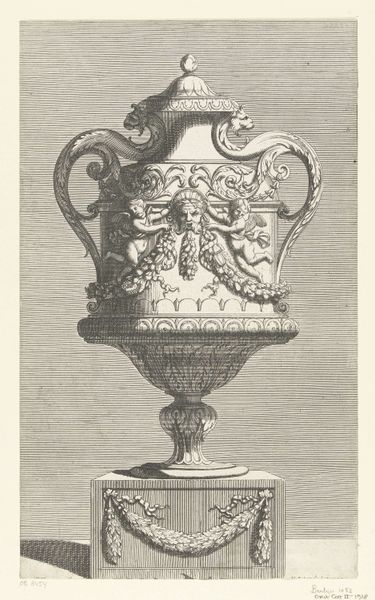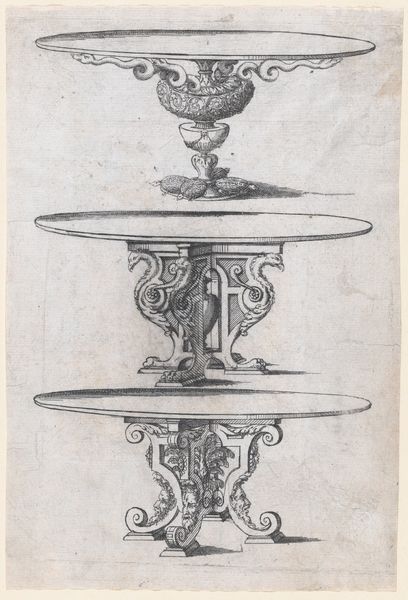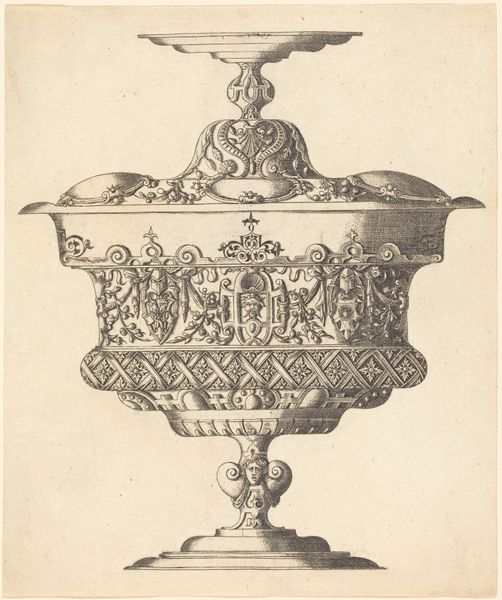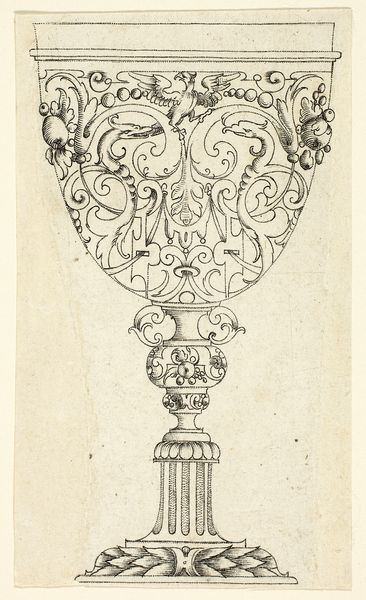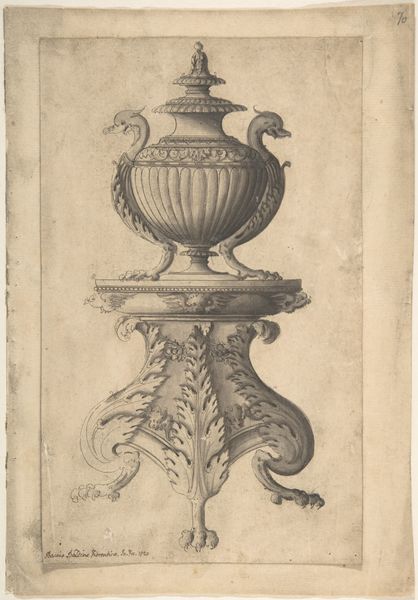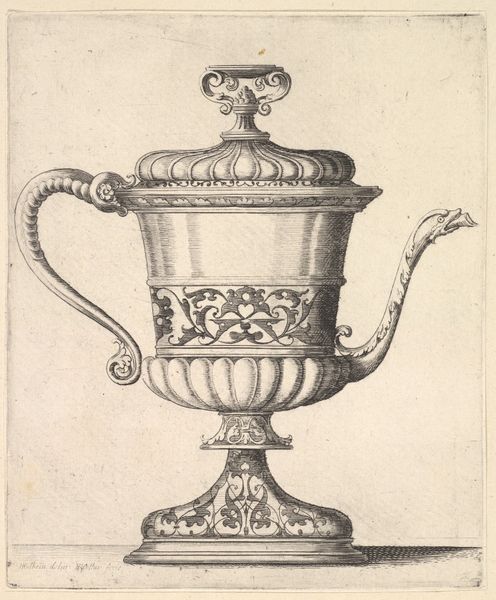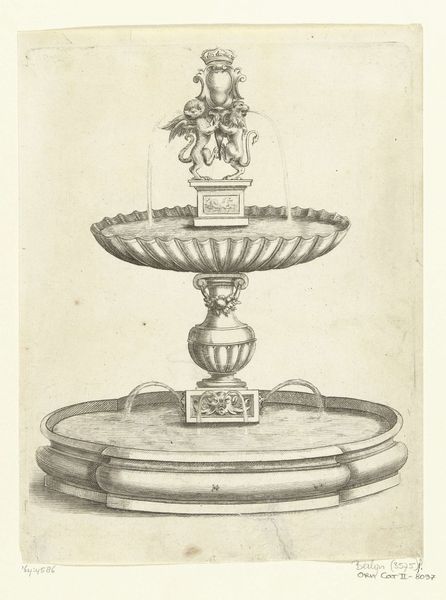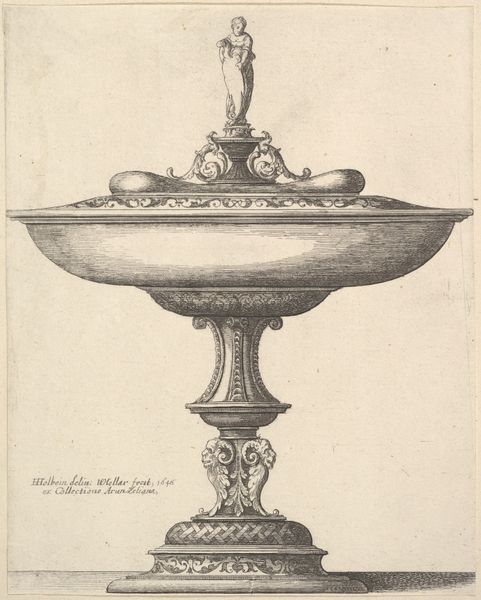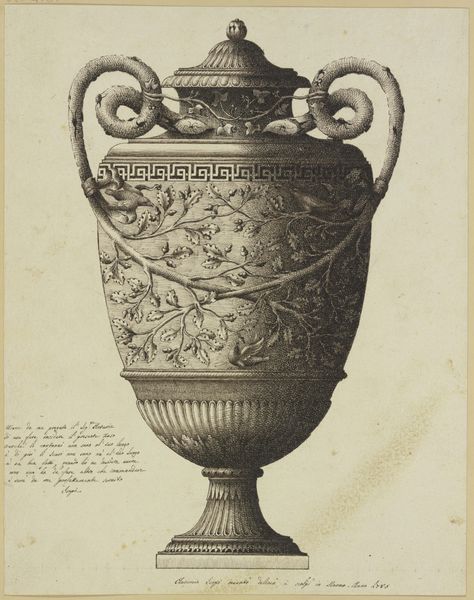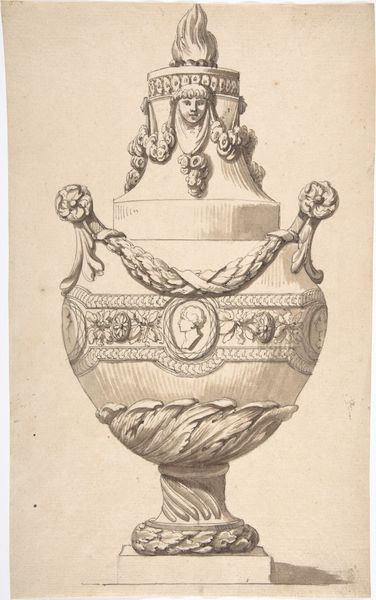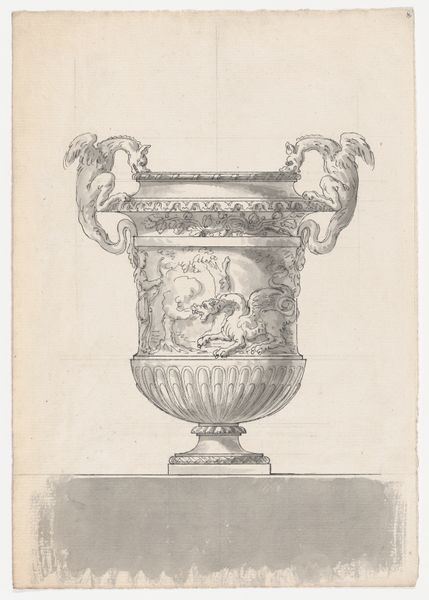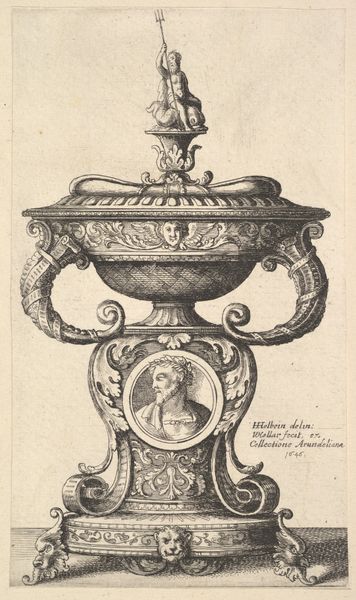
drawing, print, metal, engraving
#
drawing
# print
#
metal
#
mannerism
#
figuration
#
11_renaissance
#
history-painting
#
engraving
Copyright: National Gallery of Art: CC0 1.0
Curator: Here we have a print titled "Jar with Neptune" by Wenzel Jamnitzer. It is an engraving rendering a lavish metalwork object, characteristic of the Renaissance period. Editor: My first impression? Wildly extravagant, almost aggressively ornamental. It’s as if someone challenged the artist to put every possible flourish onto one object. Is it even functional? Curator: Functionality is secondary. Jamnitzer, working in 16th-century Nuremberg, was known for intricate metalwork designs, and prints like these served as pattern books, circulating artistic ideas throughout Europe. The image itself becomes the object of value. Editor: So, it’s less about drinking wine and more about… displaying power? It reminds me of those over-the-top cakes on baking shows, impressive but inedible. That Neptune figure perched precariously on the lip makes me nervous just looking at him! Curator: Precisely. Court culture emphasized display. Notice the abundance of marine motifs, the fantastical creatures, all reflecting an interest in classical mythology, demonstrating the patron's erudition and wealth. Think of these designs operating within a highly competitive artistic economy. Editor: And that tiny satyr perched on the side, casually emptying water into the vessel—it’s darkly humorous, really. All this serious ornamentation and then, this cheeky detail. Curator: That juxtaposition is typical of Mannerism. The period allowed for these playful insertions that disrupted strict classical conventions, acknowledging the artifice in artistry. The print’s circulation also reveals the shifting landscape where artworks existed as both precious singular items, and through reproductive technologies, they entered more households than before. Editor: It feels very...engineered. There's little breath; everywhere the eye rests there are ornaments or lines that prevent calm contemplation. Perhaps Renaissance aesthetic sensibilities truly differ from ours. For me, it creates a sort of creative claustrophobia! Curator: Ultimately, engravings like this illuminate how power, patronage, and artistry intertwined to create a visual language of wealth and erudition in Renaissance society. Editor: For me, it's a glorious, if somewhat overwhelming, testament to human ingenuity and the relentless desire to decorate. I wonder if I’d even notice Neptune falling if I actually owned something like that… I’d be too busy counting the swirls.
Comments
No comments
Be the first to comment and join the conversation on the ultimate creative platform.

